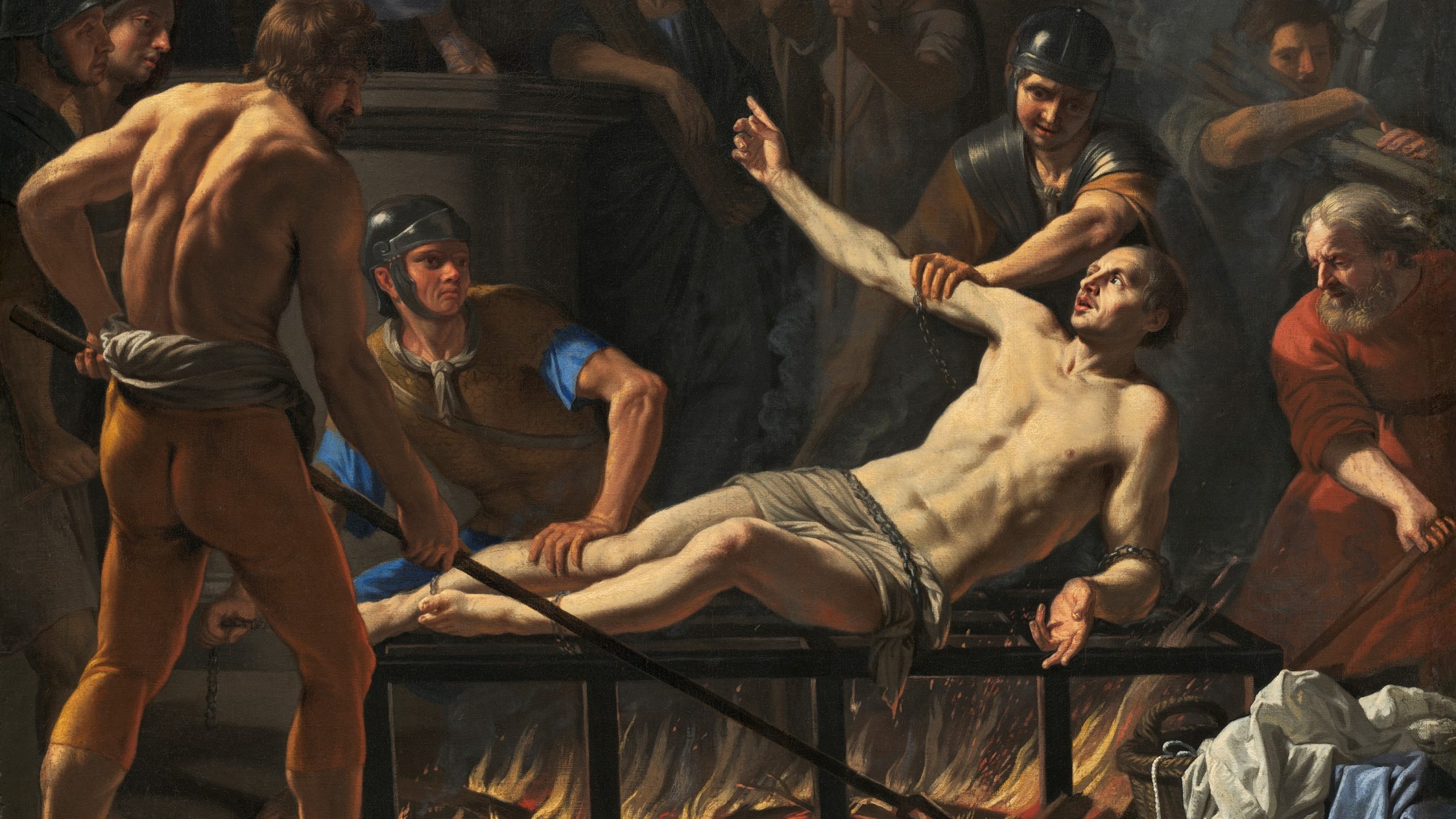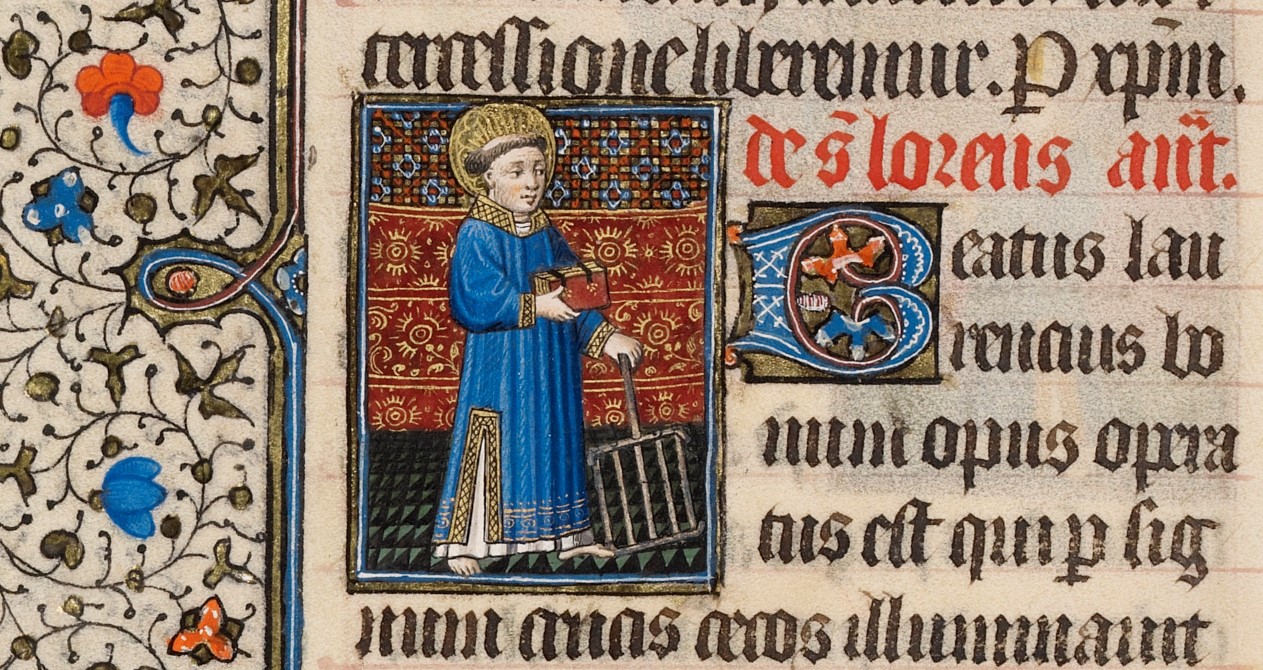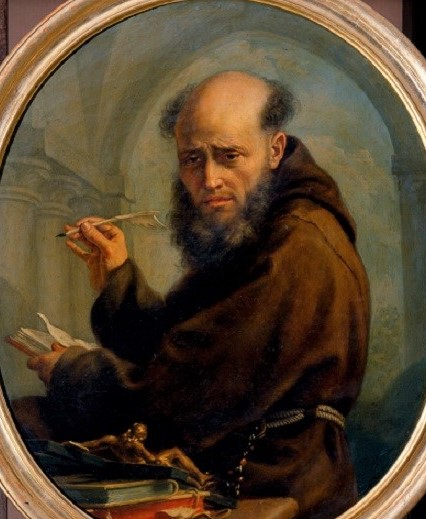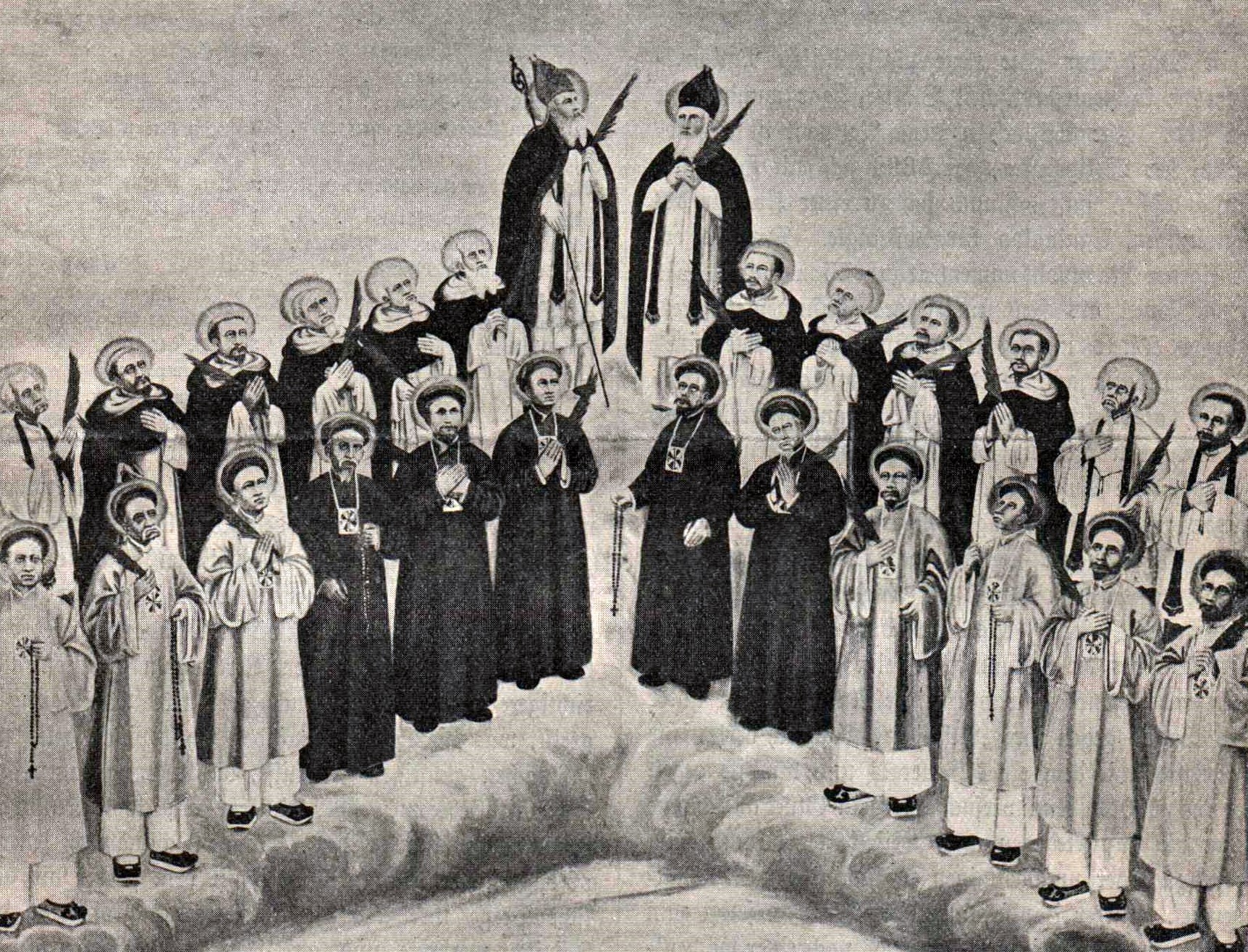

Telling them apart: The Saint Lawrences
Kristina Glicksman
Tuesday, July 21, 2020

Detail of The Martyrdom of Saint Lawrence by Jean-Baptiste de Champaigne (Source: Wikimedia Commons)
Even if you’ve only heard a few stories about saints, you probably know the one about St. Lawrence, who, while being roasted alive on a gridiron, asked his torturers to turn him over because he was “done” on that side – making him the patron saint of both cooks and comedians.
But he’s not the only St. Lawrence. Although he is the earliest one and the most famous, there are several bishops and martyrs who also bear his name.
How many had you heard of before today?



Lawrence (225-258)
…Linus, Cletus, Clement, Sixtus, Cornelius, Cyprian, Lawrence, Chrysogonus, John and Paul, Cosmas and Damian, and all your Saints… (from Eucharistic Prayer I)Lawrence lived and was martyred in the 3rd century and quickly became one of the most venerated saints of the early Church. He was born in the region of modern Spain, where he met the man who would become Pope Sixtus II. Together, they journeyed to Rome, where the new pope made him archdeacon – that is, head of the seven deacons of Rome, which made him responsible for looking after the Church’s treasury and distributing alms to those in need. In August 258, Emperor Valerian began a fresh persecution of Christians by ordering the death of all bishops, priests, and deacons. Pope Sixtus himself was captured and beheaded on August 6, and six of his seven deacons suffered the same fate. Tradition says that the official in charge demanded that Lawrence (the only deacon left) bring him all the riches of the Church. In one of the earliest surviving references to this story, the poet Prudentius puts these rather cheeky words in the official’s mouth:
“That which you know is Caesar’s render Unto him. That’s only right, For I believe your god has never Stooped to minting legal tender.” (Poem II of “Peristephanon”, translation by Len Krisak, 2020)Lawrence asked for three days to gather the Church’s vast wealth, and then at the appointed time, he revealed crowds of the poor, the crippled, the sick, and the lame. As St. Ambrose comments in his – the earliest – version of the story, “What better treasures has Jesus than those in which he loves to be seen?” (De officiis ministrorum 2.28.140). Needless to say, the greedy official was less than pleased and condemned Lawrence to a much slower and more painful death than his fellow deacons had endured. And it is Prudentius who tells us that he was roasted, joking with his captors to turn him over for proper cooking and to try if he was better raw or roasted. Although we don’t know how much of these stories is true, and though, in fact, Lawrence’s purported death-by-barbecue has been called into doubt, we do know that he did exist, that he was a deacon, that he was martyred for his faith, and that he was a hugely popular saint in the early Church and beyond. His feast day is the same day as his martyrdom: August 10.

Saint Lawrence with a Gridiron, about 1440–1450, Workshop of the Bedford Master, Ms. Ludwig IX 6, fol. 211v. Digital image courtesy of the Getty's Open Content Program.
Lawrence of Brindisi (1559-1619)
This St. Lawrence was an extremely gifted man and an important preacher during the Counter Reformation, now venerated not only as a saint but also as a Doctor of the Church. Born Giulio Caesare Russo in Brindisi, Italy, he acquired the name Lorenzo when he joined the Capuchin Franciscans as a young man, eventually being ordained to the priesthood. Being very intelligent and gifted with languages – but also a very saintly man – he was a popular and influential preacher. He became a valuable emissary of the pope to various rulers of Europe but also as a leader of evangelizing missions – first to the Jews of Rome and later to the people of Germany, heartland of the Reformation. He even had a stint as chaplain to the army of the Holy Roman Emperor, during which, armed only with a crucifix, he led vastly outnumbered Christian forces into victorious battle against the Turks in Hungary. But despite all the heady appointments and long immersion in the political sphere, St. Lawrence maintained a deep spiritual life of prayer and devotion, as can be seen in the many volumes of sermons and other religious texts he has left behind. He died at exactly 60 years old on his birthday, July 22. His feast day is July 21.
Portrait of St. Lawrence of Brindisi by Gaetano Callani (Source: Wikimedia Commons)
Those are the St. Lawrences we hear about the most, but here are a few more you might be interested to learn about:
St. Lawrence Justinian (1381-1456) was the very first Patriarch (this is, Bishop) of Venice. And he’s not the only saint who held that post. St. Pius X and St. John XXIII also share that distinction. His feast day is January 8. St. Lawrence O’Toole (c. 1128-1180) also goes by his Irish name: Lorcán Ua Tuathail. Son of Irish royalty, he became abbot of the famous monastery at Glendalough and later Archbishop of Dublin. His feast day is November 14. St. Laurence of Canterbury (?-619) was the second Archbishop of Canterbury, the successor to St. Augustine and one of the first missionaries to the people of England. His feast day is February 3. St. Lawrence of Siponto (?-c.545) was the Bishop of Sipontum, an ancient town in southern Italy, which was also an important port until it was abandoned in the 13th century. His feast day is February 7. St. Lorenzo Ruiz (1594-1637) is also known as St. Lawrence of Manila. Born into a Catholic, Chinese-Filipino family, he lived in Manila with his wife and children, but because of a false accusation of murder, he found himself on a ship headed toward Japan, where he was captured and killed during the intense and violent Christian persecutions of the time. He is the first Filipino saint and martyr and one of the patron saints of the Philippines. His feast day is September 28. St. Lawrence Ngon (c.1840-1862) and St. Lawrence Huong Van Nguyen (c.1802-1856) were two of the 117 Vietnamese martyrs, who represent the hundreds of thousands of Christians persecuted, tortured, and killed in Vietnam for their faith during the 18th and 19th centuries. Their feast day is celebrated on November 24, together with all Vietnamese martyrs, named and unnamed. St. Lawrence Han Ihyong (?-1846) was a Korean nobleman and victim of the Christian persecutions of the 19th century, along with Frenchman St. Laurent-Joseph-Marius Imbert (1796-1839), Apostolic Vicar of Korea and Titular Bishop of Capsa. The 103 Korean martyrs have a common feast day on September 20. We don’t know much about St. Lawrence of Novara (?-c.397), except that he was a priest and a martyr of the early Church. According to tradition, he was killed along with a group of children he was teaching. His feast day is April 30. St. Lawrence Wang Bing (c.1802-1858) was a Chinese layman and a catechist. He was executed by beheading along with two other catechists after refusing to renounce his Christian faith. He is remembered on July 9 as one of the 119 companions of St. Augustine Zhao Rong.
The martyrs of Tonkin, of whom St. Lawrence Ngon was one. Illustration from Die katholischen Missionen. (Source: Wikimedia Commons)
Related Articles:
<<













